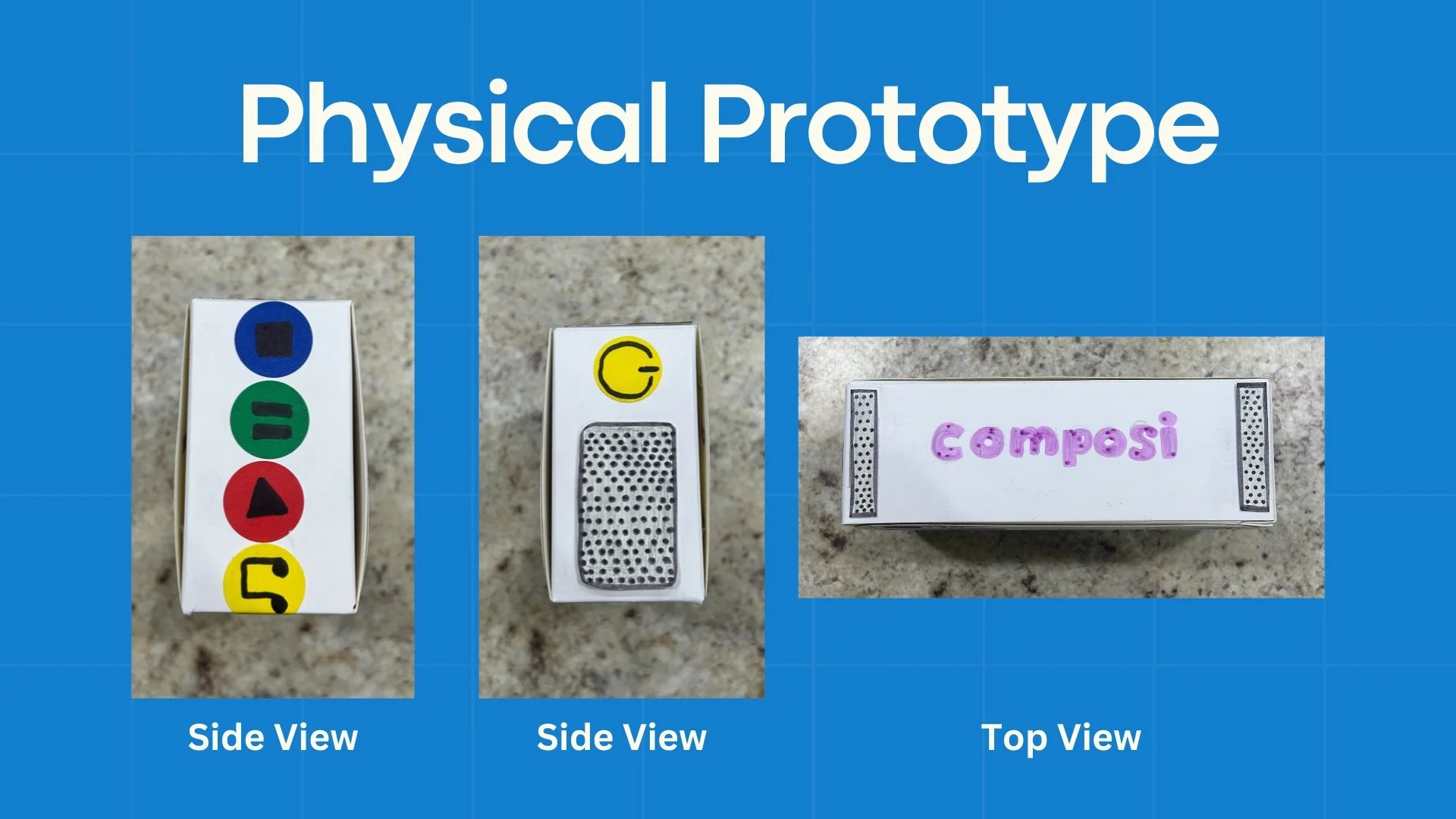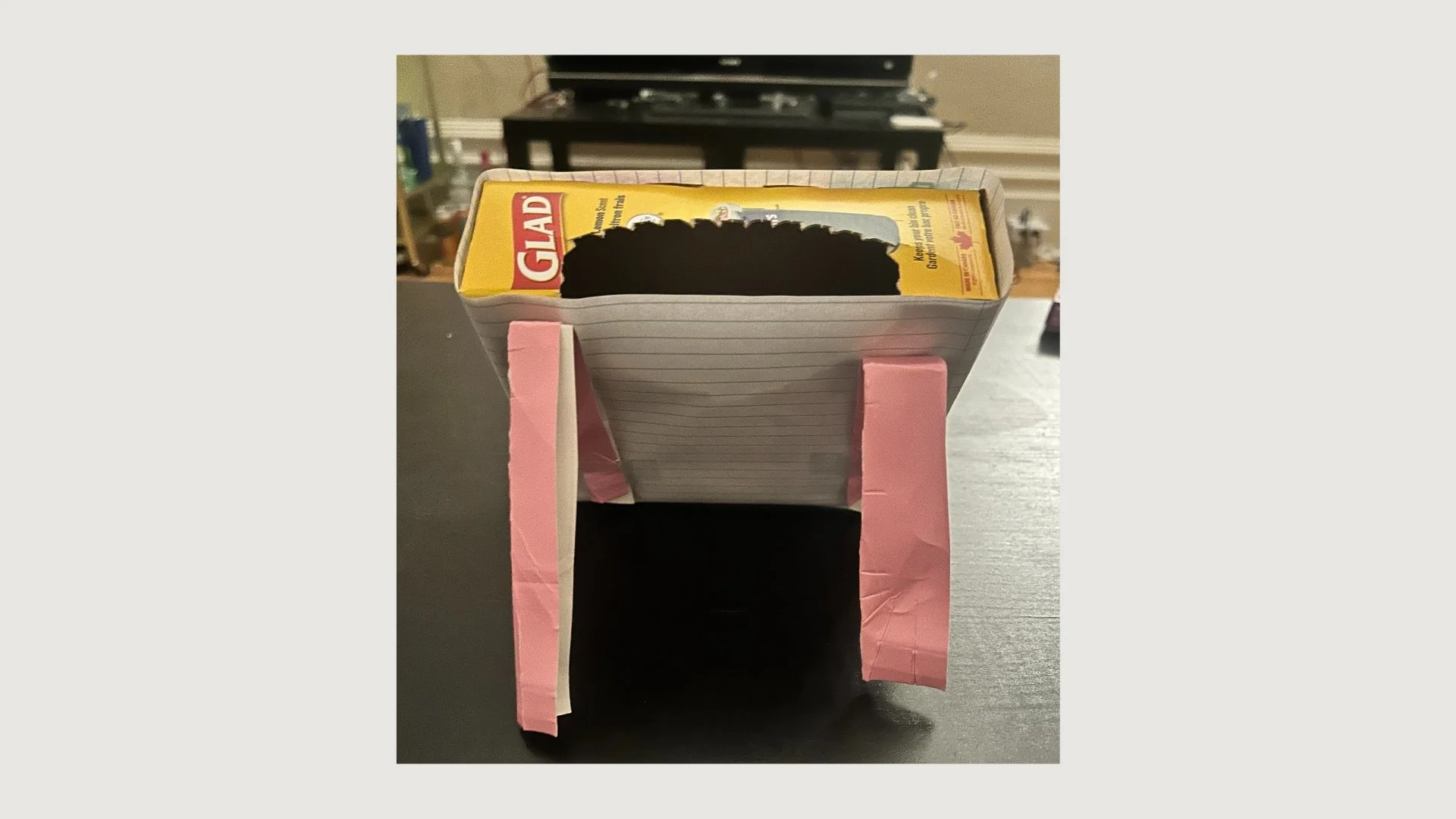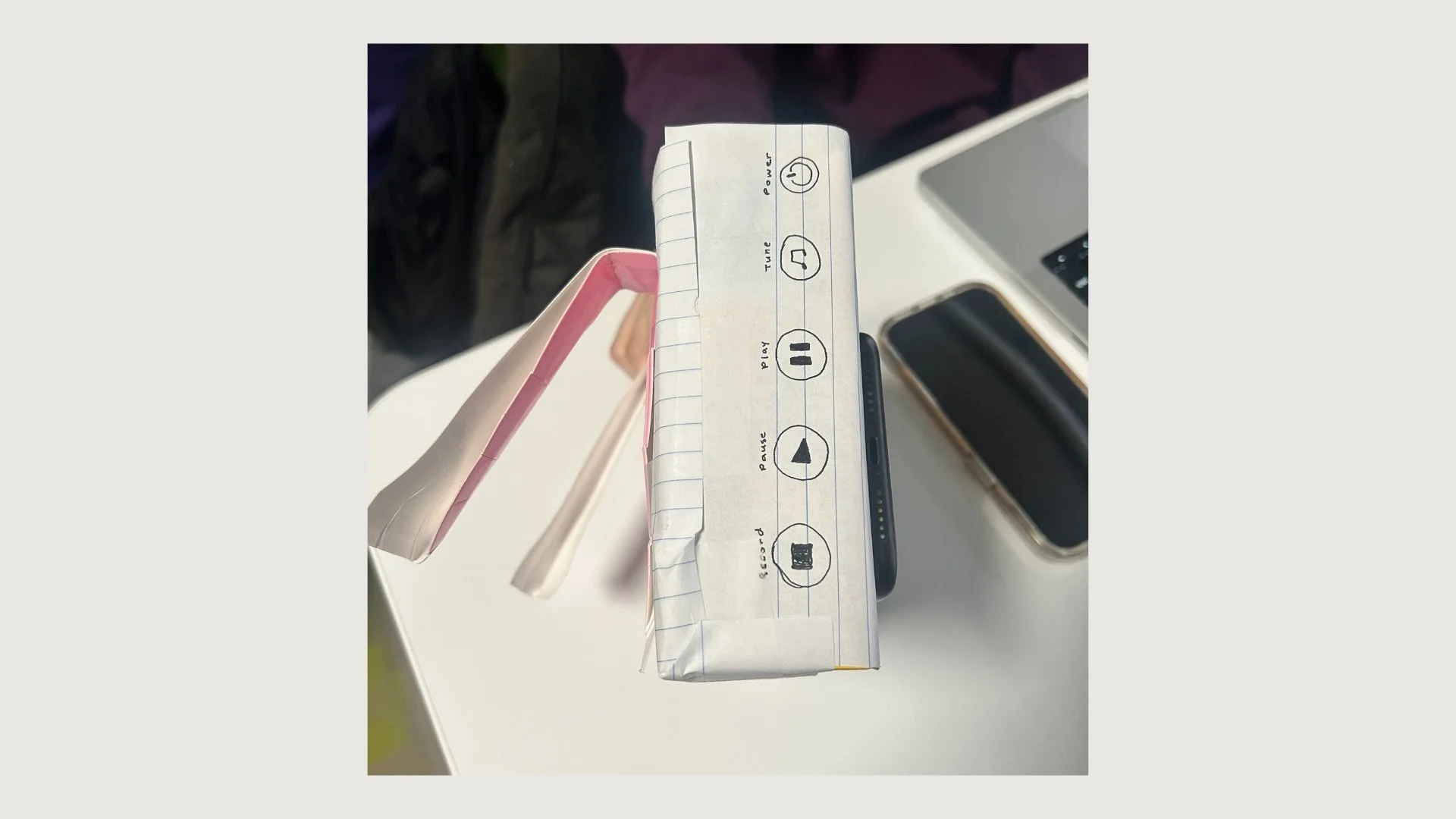My Story
I’m Omar Malik. A User-Experience Designer from Oakville, Ontario pursuing my Bachelor of Design at Wilfrid Laurier University, on the Brantford Campus.
In this section of my Portfolio, you will learn more about my in-class work from the course UX202: Maker Lab 2. To be more specific, in this section I will be highlighting the Somatic Design Projects 1 and 2 (SDP1 and SDP2).
In the Somatic Design Project 1 (SDP1), my team decided to create a product called Composi. The product focuses on creating a tool for artists to easily develop and transcribe their music into sheet music, MIDI, MusicXML, or GuitarPro. In our next iteration (SDP2), the team made several key changes to overall structure and goals of the project.
Below, you will see an full in-depth report on both of these projects.
Somatic Design Project I
In the Somatic Design Project I, our team made the product Composi to help composers and beginner-level artists compose their own music while allowing them to use the transcription platform of their choosing. Some formats include MIDI, MusicXML, GuitarPro, or plain sheet music. Composi works with all sorts of instruments, such as piano, guitar, or even the alto saxophone. Connecting via bluetooth, the product is transportable, and has a screen for viewing, accessing and editing your sheet music.
Somat0—Sensory Components
Composi provides auditory, visual, touch and motion haptics.
Visual
Contrasting colours.
Large Font.
Overall WCAG compliance.
Audio
Reply of recorded music for listening and alterations.
Touch
Large buttons with braille in attempt to aid users with visual impairments.
Motion
Drag and Drop functionality.
Swiping through notes/interface.
Edit sheet music.
Zoom in and out of sheet music.
Challenges
Our teams primary challenge through the SDP1 Project was deciding whether or not we would create a software ONLY accessible on the physical product itself, or if there would be a website/application version available on the internet. Of course, this issue provided a set of “sub-challenges”. How will we make the software compatible on a variety of devices? What role will the product itself play if the software is available on all device types? That said, we were able to mitigate these challenges/issues for SDP2.
Conclusion
Although the idea had completely formed as desired, there was lots of work still to do. That said, SDP1 comprised solely of the ideation of the product itself, with a low-medium fidelity prototype product you will see to the right side.
Somatic Design Project II
For the Somatic Design Project II, our team went back to the drawing board following feedback from our peers in class, and our professor.
A major alteration we made was making Composi an educational tool that brings composers of all backgrounds and experience levels together. Additionally, our Composi device was confirmed to have its own studio-quality microphone, with an OLED screen which would allow for usability.
Changes
Community Hub
The community hub is a “social-media-esque” platform within our software that allows users to view other composers/users, their work, and allows them to engage and get in contact with one another.
The community hub also allows users to request “tutoring” from senior/advanced level composers.
2. Artificial Intelligence Integration
With Composi AI, users can be given feedback on their sheet music, and suggest changes.
Composi AI also shows “music you may like” and recommended artists to follow based on the genre of music each user creates.
3. Internet of Things Compatibility
Using both Bluetooth and Wi-Fi connectivity, the product and software application integrate with the cloud, which ensures a direct data exchange.
4. Arduino Uno
The Arduino Uno device provides auditory feedback, playing different audio cues for each button. This feature assists users with visual impairments to ensure they are using the Composi device correctly, and completing the desired functions.
5. Software
The Composi Software allows for several new features.
Edit sheet music.
Collaborate with other composers.
Develop skills using educational videos and recordings.
Filter by genre.
Tag techniques used and discoverf various types of music to develop their skills.
Challenges
SDPII’s challenge came with the Arduino Uno R3 Microcontroller. The Arduino did not co-operate with our code written for the button prompts on our device. This caused the ultrasonic buzzer to be faulty for our final presentation.
Conclusion
Composi allows users to fully create their own sheet music using AI integration and device-based software. The device includes an OLED screen and a state of the art microphone that picks up on all instruments to create sheet music or stems for other production platforms. In addition, it can be used as an educational tool and a platform to strengthen the community of artists and composers worldwide.






